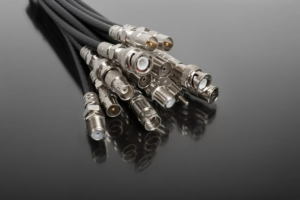Improving Data Transfer Efficiency in Telecom Cable Assemblies
Optimized cable insulation and shielding design
High-quality insulation materials are used to minimize signal interference and loss within the cable.
Braid shielding or foil shielding technology is used to effectively isolate external electromagnetic interference and protect signal integrity.
Multiplexing technology
Within a single cable assembly, multiple parallel cables are used to realize multi-channel transmission.
Optimize bandwidth utilization through reasonable channel allocation to improve overall data transmission capability.
Reduce crosstalk between channels to ensure stable signal quality for each channel.
Application of fiber optic technology
The use of fiber optic cable can achieve ultra-high-speed data transmission.
Optical fiber has low loss, anti-interference characteristics, very suitable for high-speed, high-capacity communication needs.
Fiber optic technology can greatly improve the data transmission efficiency and reliability of cable assemblies.
Optimize the structural design of cable assembly
Reasonable layout of the internal structure of the cable to improve space utilization.
Adopt modularized design for easy installation, maintenance and upgrading.
Consideration of environmental factors, such as temperature, humidity, mechanical stress, etc., to ensure the long-term stable operation of cable assemblies.
The Critical Role of Telecom Harnesses in Facilitating Effective Data Transmission
Excellent Shielding Performance
Telecom harnesses need to have excellent electromagnetic shielding performance to effectively block external electromagnetic interference and protect signal transmission from interference. Good shielding ensures signal integrity, avoids signal distortion and noise interference, and improves the reliability of data transmission.
Low resistance and capacitance characteristics
The low resistance and low capacitance characteristics of telecom harnesses are the key to efficient data transmission. This minimizes signal attenuation and distortion during transmission and improves signal integrity and transmission speed. Proper design of the resistance and capacitance parameters ensures that the signal is transmitted to the receiving end intact.
Accurate Impedance Matching
The characteristic impedance of a telecom harness needs to be matched to the impedance of the signal source and load to reduce signal reflection and improve transmission efficiency. Accurate impedance matching reduces signal distortion and energy loss, ensuring signal integrity and transmission quality.
Excellent anti-interference ability
Telecommunications harness should have excellent anti-interference properties, to resist a variety of electromagnetic interference, electrostatic interference and other effects on signal transmission. Good anti-interference capability can ensure the stability and reliability of data transmission, improve the overall performance of the system.
Excellent mechanical properties
Telecommunications wiring harness should have a certain degree of mechanical strength and flexibility, easy to install wiring, while ensuring long-term operational reliability. Excellent mechanical properties can protect the harness from external environmental factors, to ensure the continued stability of data transmission.
Signal integrity guarantee
Telecommunications harness should ensure that the signal in the transmission process will not appear distortion, delay and other issues to ensure the integrity and accuracy of data transmission. This requires comprehensive consideration of signal coding, modulation, synchronization and other factors to ensure signal integrity.
In short, the performance indicators of the telecom harness have an important impact on the efficiency and quality of data transmission. Design and selection of the appropriate telecommunications harness for the realization of high-speed, high-quality data transmission is essential.





